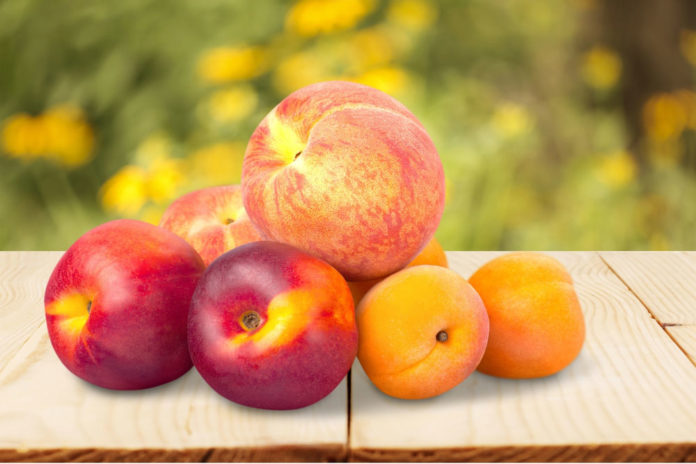What Are Stone Fruits?
Also known as drupes, the family of stone fruits includes cherries, plums, apricots, nectarines, and peaches. Although their exteriors display various vibrant colors, the interiors contain one large and hard seed, coining their name as “stone fruits.” More specifically, stone fruits contain an edible, outer flesh that surrounds a hardened shell with a seed harnessed inside. Although the fruits may flourish year-round with attentive care, they are native to warmer climates and should have continuous access to air, drained from excess water, and protected from harsh winds. But under the right conditions and careful attentions, stone fruit offers not only a sweetly rich flavor, but a number of benefits!
10 Benefits of Stone Fruits
1. Boosts Immunity
Stone fruit types are robust in vitamin C, a potent antioxidant that helps build a h3 immune system. Lower vitamin C levels may compromise the production of infection-fighting antibodies and make the body more susceptible to infections. And if a seasonal cold were to arise, vitamin C has shown to shorten its duration and mitigate the severity.
2. Upkeeps Skin Health
Along with vitamin C’s immune boosting properties, the vitamin also has a key role in collagen production within various skin layers. Collagen is the body’s most abundant protein and offers structure to skin and other connective tissues. Studies have further demonstrated that vitamin C may prevent against ultraviolet (UV) radiation damage and reduce skin cancer risk.
3. Sharpens Eyesight
The orange color of apricots, peaches, and nectarines offers not only a lavish appearance, but may sharpen eyesight. The appeal can be attributed to their carotenoid content, a precursor to vitamin A, the pigment responsible for orange color hues, and essential for maintaining good eye health. The vitamin C found in stone fruit may also reduce cataract risk.
4. Supports A Healthy Heart
The heart may benefit from stone fruit related to multiple nutrients. The fiber content may reduce cholesterol levels while the antioxidant properties of various micronutrients can further protect against arterial damage. The potent inflammatory effects of stone fruits can also assist in blood pressure regulation.
5. Promotes Digestive Health
Stemming back to their fiber content, stone fruits can help promote digestive health. Obtaining the recommended fiber intake (38 grams for men and 25 grams for women each day) can promote bowel regularity, reduce hemorrhoid risk, and even protect against cancers associated with the digestive system. And as an added bonus, fiber has shown to promote a healthy body mass index (BMI)!
6. Fights Against Metabolic Syndrome
Metabolic syndrome is a cluster of conditions that may heighten the risk of heart disease, stroke, and diabetes, mostly instigated by obesity and inflammation. Properties associated with stone fruits’ phenolic groups intricately fight against obesity, inflammatory, and diabetes, successively shown to fight against metabolic syndrome.
7. Protects Against Cancer
Although the vibrant colors of stone fruits can thank their phytochemical content, the non-nutritive plant chemical offers much more than appeal. Phytochemicals also have potent antioxidant activity shown to protect cells against damage, therefore reducing the risk of developing certain forms of cancers.
8. Reduces Muscle Pain
Cherry juice has explicitly been touted to reduce muscle pain, as complimenting research suggests long-distance runners who consumed tart cherry juice experienced less pain than those who went without. Mostly attributed to its anti-inflammatory properties, cherry juice is often a reliant post-recovery drink for reducing muscle pain and soreness.
9. Aids in Sleep
Cherries are rich in melatonin, the byproduct of serotonin and utilized to induce sleep by controlling the body’s sleep and wake cycles. And also known as “the fruit of calmness,” peaches may reduce feelings of anxiety, subsequently relaxing the body and promoting a more restful night’s sleep.
10. Versatile
Stone fruits are simply delectable as is. But along with enjoying them in their raw form, they are extremely versatile – add peaches into bistroMD’s homemade crisp, cherries into these 10 savory recipes, or roasted plums paired with Greek yogurt. The options are fruitful!
Reference: Peaches, plums, nectarines give obesity, diabetes slim chance. Science Daily.






